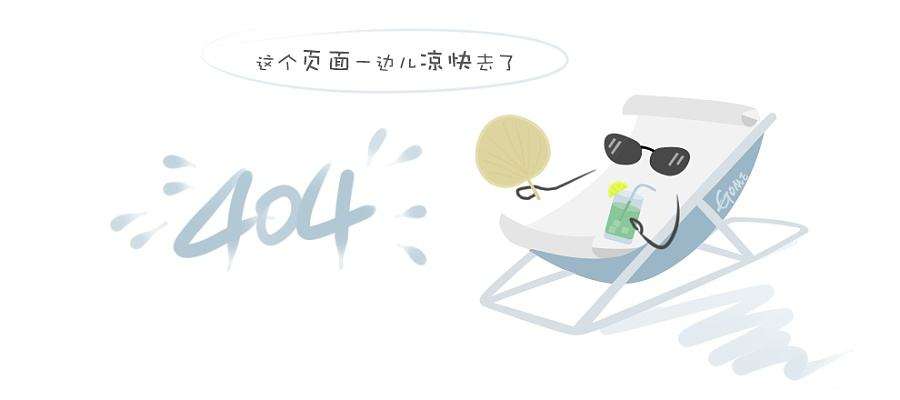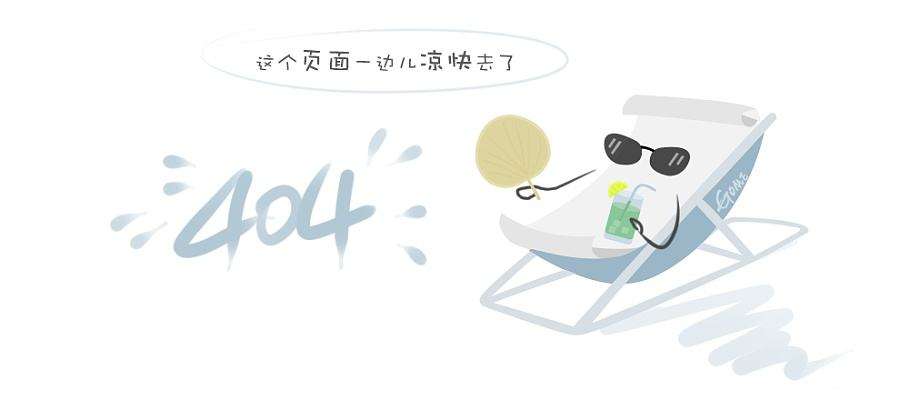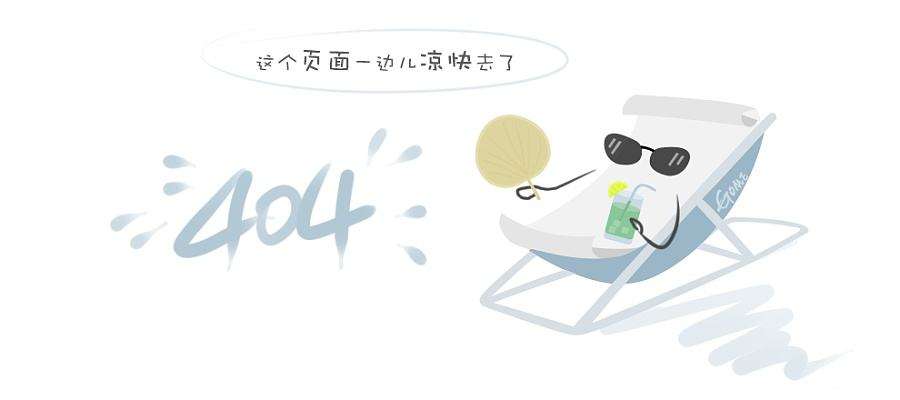chinaeconomicweekly|yunnandali:revolutionaryandsustainedactionstakentowinthebattleoferhailakeprotectionandmanagement-欧洲杯在线开户
2019-03-13 on march 12, china economic weekly covered china water environment group’s (“cweg”) dali erhai lake wastewater interception ppp project (phase i) in its two sessions column, fifth issue of 2019, attracting wide attention and praise. as a state-owned enterprise, cweg will assume its social responsibilities and protect the erhai lake ecosystem for the benefit of local people, in a bid to promote china""s ecological civilization construction and green development.
the media coverage reads as follows:
on jan. 20, 2015, at gusheng village, wanqiao town, dali city, general secretary xi jinping had a photo taken with local officials by the erhai lake. “we should never develop the economy at the expense of ecological environment,” xi said, “we must protect the erhai lake, keeping the picturesque beauty of the cang mountain and erhai lake for the world.” he also raised his hope for a cleaner erhai lake.
four years on, what work has been done to protect and renovate the erhai lake? has the ecosystem of erhai lake been improved? and what will be the next step?
on feb. 25, 2019, during an inspection tour to dali bai autonomous prefecture, han zheng, member of the standing committee of the political bureau of the central committee of the cpc and vice premier of the state council, gave dali credit for the achievements made in curbing the deterioration of water quality of the erhai lake. “to continue to forge ahead, it is necessary to study and implement president xi’s thought of ecological civilization, increase the sense of urgency and devote greater efforts. we must fully realize that the protection and management of erhai lake is a chronic, arduous and complex task that requires patience, willpower, pragmatism and confidence.”
wastewater interception and tourism regulation combine to renovate the erhai lake
looking back at 2018, the overall water quality of the erhai lake maintained at surface water quality standard class ⅲ (achieving class ⅱ for 7 months, class ⅲ for 5 months), the best record ever since 2015.
however, as the erhai lake is a plateau lake being long contaminated, its pollution control will be a world-class challenge with obvious chronicity, arduousness and complexity.
“we always bear in mind general secretary xi’s instructions, give top priority to the protection and management of erhai lake, and work to facilitate this political task diligently”, yunnan provincial governor ruan chengfa told a reporter from people’s daily on march 7, the open day of the yunnan delegation during the second session of the 13th national people""s congress. according to ruan, vigorous efforts were already made by the provincial, prefecture and municipal party committees and governments to promote the wastewater interception and control around the erhai lake. as a result, rainwater and wastewater diversion, collection and treatment systems were preliminarily installed across the entire river watershed, urban and rural areas; phosphorus and nitrogen fertilizers, along with highly toxic and persistent pesticides were banned; garlic planting area decreased by 100,000 mu; 46 large-scale livestock and poultry farms were shut down or relocated to reduce nonpoint source pollution; and a series of pollution control projects were in full swing. so far, the erhai lake pollution control projects included in china’s 13th five-year plan registered a total investment of rmb 16.245 billion, accounting for 81% of total planned investment and 5.8 times that of the 12th five-year plan.
“a clean erhai lake means a prosperous dali”. in an interview with china economic weekly, yang jian, governor of dali prefecture and deputy to the national people""s congress, said frankly that the public""s high expectations for a clean and clear erhai lake had put an extraordinarily heavy strain on him. “but even so, i still firmly believe that the hour of victory will be approaching,” he added.
to win the “eight battles” against pollution for the protection and management of erhai lake, the first was to focus on wastewater interception. “currently 19 wwtps and the 4,461-km-long tertiary systems connected to the trunk sewer have been built to support each household. this is not an easy job and thus wins the admiration of vice premier han zheng during his inspection,” yang told the reporter.
at shuanglang town, han zheng inspected the shuanglang underground wwtp as part of the dali erhai lake wastewater interception ppp project (phase i) undertaken by cweg and crucial to the protection of erhai lake.
the purpose of wastewater interception is to completely eliminate the discharge of domestic and industrial wastewater into the lake. then, how is the intercepted wastewater treated? “the intercepted wastewater will be conveyed to underground wwtp for treatment using eco-friendly technology, and the quality of treated wastewater will exceed surface water quality standard class iv. tail water will be further purified in an ecological pond to achieve surface water quality standard class ⅲ, for urban landscaping, agricultural irrigation and other uses, helping reduce more than 20 million m3 of water pumped from the erhai lake each year,” cweg chairman hou feng told the reporter.
in addition, dali has also taken significant measures to relieve pressure on the lakeside environment of the erhai lake brought by tourism increase. through proper propaganda and regulation, of the 47.1 million tourists flocking to dali prefecture in 2018, the erhai lake received only more than 18 million, and more than half of them had their trips outside the river watershed.
since may 2018 when dali drew the “three ecological lines” for the protection of erhai lake, a total of 1,806 households (or 7,270 people) living nearby have been relocated, and 648,000 m2 of buildings have been demolished.
as yang jian unveiled, dali was working to relocate these households in a relatively centralized way. after the demolition, a 15m-long section around the lake will be left for constructing an ecological isolation belt, which is expected to be completed by 2020. in this way, the phenomenon of “lake receding due to unreasonable reclamation” can be avoided.
to find a solution to this costly task
improving the water quality of erhai lake is a long-term task, and the bottleneck lies in heavy investment and capital shortage.
on march 7, the open day of the yunnan delegation during the second session of the 13th national people""s congress, yunnan provincial governor ruan chengfa pointed out that although the water quality of erhai lake has been preliminarily improved, it has not yet stabilized. “despite some success, we shouldn’t be conceited and overestimate what we’ve achieved since the protection and management of the erhai lake still has a long way to go. to find a radical solution to this costly task, we should devote more courage, persistence and enforcement, take more effective measures, and develop a sound investment mechanism, making the protection and management of the erhai lake an engine for boosting the economic and social development of dali.”
according to the 13th five-year plan, a total of 76 projects regarding the environmental protection of erhai lake and erhai lake watershed ecological construction planning will be implemented with rmb 27.3 billion funds, of which rmb 17.222 billion has been invested from 2015 to 2018, leaving a funding gap of about rmb 10 billion. the situation may get tougher if the quantity of project increases, which will add to the investment and place an unbearable financial burden on the dali government.
thankfully, the ppp (public-private partnerships) model provides the solution. according to yang jian, in recent years, the bulk of project capital need is met by the bank and private participant, and the remaining part comes from fiscal revenue.
one of the examples is the shuanglang underground wwtp as part of the dali erhai lake wastewater interception ppp project (phase i). included in the second ppp demonstration projects of the ministry of finance, the project was financed by rmb 100 million government funding and rmb 2.88 billion private capital, and planned to build 6 underground wwtps with a budget coming to rmb 3.49 billion, exceeding the total investment during the 12th five-year plan. upon its completion, cweg will be responsible for the operation and provision of public services on behalf of the local government.
thanks to cweg’s advanced technology, the project saved c. rmb 600 million of investment (original total investment of rmb 3.49 billion), progressed rapidly as per requirements at the provincial, prefecture and municipal levels, and was completed 6 months ahead of schedule, unleashing huge ecological and environmental values. currently 6 underground wwtps with a total capacity of 8.494 million m3 have come into service, reducing 353.2 tons of cod, 79.2 tons of ammonia nitrogen and 9.7 tons of phosphorus annually, contributing largely to the fact that the water quality of erhai lake steadily achieved surface water quality standard class ⅲ throughout 2018.
hou feng, chairman of cweg which serves as a private party in this project, held that the ppp model helps smooth the government’s financial expenditures, and more importantly, attract social-capital expert teams to engage in the provision of high-quality public services, playing a critical role in china’s supply-side structural reform. “only being professional can a private participant really provide premium and effective public services throughout the entire period of a ppp project at a lower cost,” he said.
“for now, all the 5 ppp projects concerning the protection and management of erhai lake in dali prefecture have been signed and included in the demonstration projects of the ministry of finance. the erhai lake wastewater interception project, particularly, has earned high praise,” said yang jian.
“now we are at a very important point in time in terms of the protection and management of erhai lake. if we don’t move ahead, we will have to bear the terrible consequences and all our past efforts will turn out to be in vain. therefore, we have to brave the enormous pressure and continue increasing the already high investment”, he added.
in view of this, during china’s two sessions this year, yang proposed two suggestions. the first was to make the protection and management of erhai lake a pilot project in the ecological restoration of mountains, waters, forests, farmlands, lakes and grasslands. the second related to establishing a long-acting investment, operation and management mechanism. “the protection and management of erhai lake is not a one-time effort. after the construction is completed, we should move to contemplate issues about long-term operation, maintenance and management. this requires governments at higher levels to guarantee sustainable capital for the project in the long run,” yang noted.
embarking on a new path towards dali prosperity grounded on the protection and management of erhai lake
at the venue of china’s two sessions, yang jian was interviewed by china economic weekly. he showed the reporter the planning map of dali’s new areas and elaborated on the undergoing spatial planning of the erhai lake watershed as well as the dali urban master plan being modified.
“previously, the planning of dali was based on the development of erhai lake, which is now in need of revision according to the requirements of the protection and management of erhai lake,” yang told the reporter, “to promote and revolutionize green production and living along the erhai lake watershed, a new path that balances the protection and management of erhai lake and the transformation of erhai lake watershed should be developed, to better boost the economic and social development of dali prefecture and make the river watershed a demonstration area achieving high-quality and leapfrog development in yunnan province.”
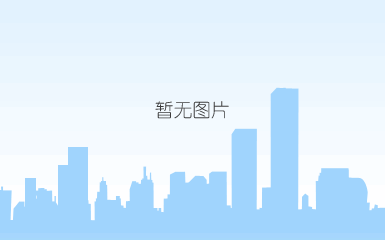
according to yang, first, all the polluting enterprises within the river watershed will be relocated through unprecedented efforts, including relocating three cement plants with an annual output of 5 million tons by the end of this year; and selecting new sites for 57 closed non-coal mines for eco-friendly reconstruction.
second, the traditional industrial structures should be abandoned, turning to ecological organic agriculture. modern industries such as advanced equipment manufacturing, plateau agri-product processing, clean energy, logistics and bio-pharmaceutical are now rising in dali.
third, in terms of spatial planning, new urban areas have been incorporated into the plan and will be built outside the river watershed. “these complementary measures will not only reduce the ecological pressure on the erhai lake watershed, but also facilitate the development of other parts of dali prefecture,” yang continued.
“however, although phased achievements have been made, the protection and management of erhai lake, as a chronic, arduous, complicated and systematic task that cannot be accomplished overnight, remains a big problem faced by dali. the lake’s cumulative pollution is still serious due to complex fluctuations in the stability of water quality and ecosystem caused by the uncertainty of factors like temperature and rainfall. within the river watershed, the green production mode has also not yet matured,” emphasized yang.
“on march 5, general secretary xi jinping participated in the deliberations of the inner mongolia delegation at the second session of the 13th national people’s congress, during which he had urged all the parties involved to continue to strengthen ecological environment protection unswervingly. this immediately reminded me of the protection and management of erhai lake, prompting us to maintain the strategic focus and work in a determined way,” yang said.
over the course of 2019, dali will continue to work on the “eight battles” for the protection and management of erhai lake, including the “wastewater interception battle”, “ecological relocation battle”, “mining management battle”, “agricultural non-point source pollution control battle”, “river management battle”, “lakeside ecological restoration battle”, “water quality improvement battle” and “overdevelopment control battle”. a corresponding timeline has also been established: ensuring the water quality of erhai lake achieves surface water quality standard class ⅱ for 6 months or even 7 months in 2019; effectively reducing the pollution of the river watershed, and improving the water quality of main streams entering the lake, and consequently the ecological environment by 2020.
source: china economic weekly, fifth issue of 2019

the media coverage reads as follows:
on jan. 20, 2015, at gusheng village, wanqiao town, dali city, general secretary xi jinping had a photo taken with local officials by the erhai lake. “we should never develop the economy at the expense of ecological environment,” xi said, “we must protect the erhai lake, keeping the picturesque beauty of the cang mountain and erhai lake for the world.” he also raised his hope for a cleaner erhai lake.
four years on, what work has been done to protect and renovate the erhai lake? has the ecosystem of erhai lake been improved? and what will be the next step?
on feb. 25, 2019, during an inspection tour to dali bai autonomous prefecture, han zheng, member of the standing committee of the political bureau of the central committee of the cpc and vice premier of the state council, gave dali credit for the achievements made in curbing the deterioration of water quality of the erhai lake. “to continue to forge ahead, it is necessary to study and implement president xi’s thought of ecological civilization, increase the sense of urgency and devote greater efforts. we must fully realize that the protection and management of erhai lake is a chronic, arduous and complex task that requires patience, willpower, pragmatism and confidence.”
wastewater interception and tourism regulation combine to renovate the erhai lake
looking back at 2018, the overall water quality of the erhai lake maintained at surface water quality standard class ⅲ (achieving class ⅱ for 7 months, class ⅲ for 5 months), the best record ever since 2015.
however, as the erhai lake is a plateau lake being long contaminated, its pollution control will be a world-class challenge with obvious chronicity, arduousness and complexity.
“we always bear in mind general secretary xi’s instructions, give top priority to the protection and management of erhai lake, and work to facilitate this political task diligently”, yunnan provincial governor ruan chengfa told a reporter from people’s daily on march 7, the open day of the yunnan delegation during the second session of the 13th national people""s congress. according to ruan, vigorous efforts were already made by the provincial, prefecture and municipal party committees and governments to promote the wastewater interception and control around the erhai lake. as a result, rainwater and wastewater diversion, collection and treatment systems were preliminarily installed across the entire river watershed, urban and rural areas; phosphorus and nitrogen fertilizers, along with highly toxic and persistent pesticides were banned; garlic planting area decreased by 100,000 mu; 46 large-scale livestock and poultry farms were shut down or relocated to reduce nonpoint source pollution; and a series of pollution control projects were in full swing. so far, the erhai lake pollution control projects included in china’s 13th five-year plan registered a total investment of rmb 16.245 billion, accounting for 81% of total planned investment and 5.8 times that of the 12th five-year plan.
“a clean erhai lake means a prosperous dali”. in an interview with china economic weekly, yang jian, governor of dali prefecture and deputy to the national people""s congress, said frankly that the public""s high expectations for a clean and clear erhai lake had put an extraordinarily heavy strain on him. “but even so, i still firmly believe that the hour of victory will be approaching,” he added.
to win the “eight battles” against pollution for the protection and management of erhai lake, the first was to focus on wastewater interception. “currently 19 wwtps and the 4,461-km-long tertiary systems connected to the trunk sewer have been built to support each household. this is not an easy job and thus wins the admiration of vice premier han zheng during his inspection,” yang told the reporter.
at shuanglang town, han zheng inspected the shuanglang underground wwtp as part of the dali erhai lake wastewater interception ppp project (phase i) undertaken by cweg and crucial to the protection of erhai lake.
the purpose of wastewater interception is to completely eliminate the discharge of domestic and industrial wastewater into the lake. then, how is the intercepted wastewater treated? “the intercepted wastewater will be conveyed to underground wwtp for treatment using eco-friendly technology, and the quality of treated wastewater will exceed surface water quality standard class iv. tail water will be further purified in an ecological pond to achieve surface water quality standard class ⅲ, for urban landscaping, agricultural irrigation and other uses, helping reduce more than 20 million m3 of water pumped from the erhai lake each year,” cweg chairman hou feng told the reporter.
in addition, dali has also taken significant measures to relieve pressure on the lakeside environment of the erhai lake brought by tourism increase. through proper propaganda and regulation, of the 47.1 million tourists flocking to dali prefecture in 2018, the erhai lake received only more than 18 million, and more than half of them had their trips outside the river watershed.
since may 2018 when dali drew the “three ecological lines” for the protection of erhai lake, a total of 1,806 households (or 7,270 people) living nearby have been relocated, and 648,000 m2 of buildings have been demolished.
as yang jian unveiled, dali was working to relocate these households in a relatively centralized way. after the demolition, a 15m-long section around the lake will be left for constructing an ecological isolation belt, which is expected to be completed by 2020. in this way, the phenomenon of “lake receding due to unreasonable reclamation” can be avoided.
to find a solution to this costly task
improving the water quality of erhai lake is a long-term task, and the bottleneck lies in heavy investment and capital shortage.
on march 7, the open day of the yunnan delegation during the second session of the 13th national people""s congress, yunnan provincial governor ruan chengfa pointed out that although the water quality of erhai lake has been preliminarily improved, it has not yet stabilized. “despite some success, we shouldn’t be conceited and overestimate what we’ve achieved since the protection and management of the erhai lake still has a long way to go. to find a radical solution to this costly task, we should devote more courage, persistence and enforcement, take more effective measures, and develop a sound investment mechanism, making the protection and management of the erhai lake an engine for boosting the economic and social development of dali.”
according to the 13th five-year plan, a total of 76 projects regarding the environmental protection of erhai lake and erhai lake watershed ecological construction planning will be implemented with rmb 27.3 billion funds, of which rmb 17.222 billion has been invested from 2015 to 2018, leaving a funding gap of about rmb 10 billion. the situation may get tougher if the quantity of project increases, which will add to the investment and place an unbearable financial burden on the dali government.
thankfully, the ppp (public-private partnerships) model provides the solution. according to yang jian, in recent years, the bulk of project capital need is met by the bank and private participant, and the remaining part comes from fiscal revenue.
one of the examples is the shuanglang underground wwtp as part of the dali erhai lake wastewater interception ppp project (phase i). included in the second ppp demonstration projects of the ministry of finance, the project was financed by rmb 100 million government funding and rmb 2.88 billion private capital, and planned to build 6 underground wwtps with a budget coming to rmb 3.49 billion, exceeding the total investment during the 12th five-year plan. upon its completion, cweg will be responsible for the operation and provision of public services on behalf of the local government.
thanks to cweg’s advanced technology, the project saved c. rmb 600 million of investment (original total investment of rmb 3.49 billion), progressed rapidly as per requirements at the provincial, prefecture and municipal levels, and was completed 6 months ahead of schedule, unleashing huge ecological and environmental values. currently 6 underground wwtps with a total capacity of 8.494 million m3 have come into service, reducing 353.2 tons of cod, 79.2 tons of ammonia nitrogen and 9.7 tons of phosphorus annually, contributing largely to the fact that the water quality of erhai lake steadily achieved surface water quality standard class ⅲ throughout 2018.
hou feng, chairman of cweg which serves as a private party in this project, held that the ppp model helps smooth the government’s financial expenditures, and more importantly, attract social-capital expert teams to engage in the provision of high-quality public services, playing a critical role in china’s supply-side structural reform. “only being professional can a private participant really provide premium and effective public services throughout the entire period of a ppp project at a lower cost,” he said.
“for now, all the 5 ppp projects concerning the protection and management of erhai lake in dali prefecture have been signed and included in the demonstration projects of the ministry of finance. the erhai lake wastewater interception project, particularly, has earned high praise,” said yang jian.
“now we are at a very important point in time in terms of the protection and management of erhai lake. if we don’t move ahead, we will have to bear the terrible consequences and all our past efforts will turn out to be in vain. therefore, we have to brave the enormous pressure and continue increasing the already high investment”, he added.
in view of this, during china’s two sessions this year, yang proposed two suggestions. the first was to make the protection and management of erhai lake a pilot project in the ecological restoration of mountains, waters, forests, farmlands, lakes and grasslands. the second related to establishing a long-acting investment, operation and management mechanism. “the protection and management of erhai lake is not a one-time effort. after the construction is completed, we should move to contemplate issues about long-term operation, maintenance and management. this requires governments at higher levels to guarantee sustainable capital for the project in the long run,” yang noted.
embarking on a new path towards dali prosperity grounded on the protection and management of erhai lake
at the venue of china’s two sessions, yang jian was interviewed by china economic weekly. he showed the reporter the planning map of dali’s new areas and elaborated on the undergoing spatial planning of the erhai lake watershed as well as the dali urban master plan being modified.
“previously, the planning of dali was based on the development of erhai lake, which is now in need of revision according to the requirements of the protection and management of erhai lake,” yang told the reporter, “to promote and revolutionize green production and living along the erhai lake watershed, a new path that balances the protection and management of erhai lake and the transformation of erhai lake watershed should be developed, to better boost the economic and social development of dali prefecture and make the river watershed a demonstration area achieving high-quality and leapfrog development in yunnan province.”


cweg dali shuanglang underground wwtp
shifting focus from the protection and management of erhai lake to that of erhai lake watershed at largeaccording to yang, first, all the polluting enterprises within the river watershed will be relocated through unprecedented efforts, including relocating three cement plants with an annual output of 5 million tons by the end of this year; and selecting new sites for 57 closed non-coal mines for eco-friendly reconstruction.
second, the traditional industrial structures should be abandoned, turning to ecological organic agriculture. modern industries such as advanced equipment manufacturing, plateau agri-product processing, clean energy, logistics and bio-pharmaceutical are now rising in dali.
third, in terms of spatial planning, new urban areas have been incorporated into the plan and will be built outside the river watershed. “these complementary measures will not only reduce the ecological pressure on the erhai lake watershed, but also facilitate the development of other parts of dali prefecture,” yang continued.
“however, although phased achievements have been made, the protection and management of erhai lake, as a chronic, arduous, complicated and systematic task that cannot be accomplished overnight, remains a big problem faced by dali. the lake’s cumulative pollution is still serious due to complex fluctuations in the stability of water quality and ecosystem caused by the uncertainty of factors like temperature and rainfall. within the river watershed, the green production mode has also not yet matured,” emphasized yang.
“on march 5, general secretary xi jinping participated in the deliberations of the inner mongolia delegation at the second session of the 13th national people’s congress, during which he had urged all the parties involved to continue to strengthen ecological environment protection unswervingly. this immediately reminded me of the protection and management of erhai lake, prompting us to maintain the strategic focus and work in a determined way,” yang said.
over the course of 2019, dali will continue to work on the “eight battles” for the protection and management of erhai lake, including the “wastewater interception battle”, “ecological relocation battle”, “mining management battle”, “agricultural non-point source pollution control battle”, “river management battle”, “lakeside ecological restoration battle”, “water quality improvement battle” and “overdevelopment control battle”. a corresponding timeline has also been established: ensuring the water quality of erhai lake achieves surface water quality standard class ⅱ for 6 months or even 7 months in 2019; effectively reducing the pollution of the river watershed, and improving the water quality of main streams entering the lake, and consequently the ecological environment by 2020.
source: china economic weekly, fifth issue of 2019

 中国水环境集团
中国水环境集团


